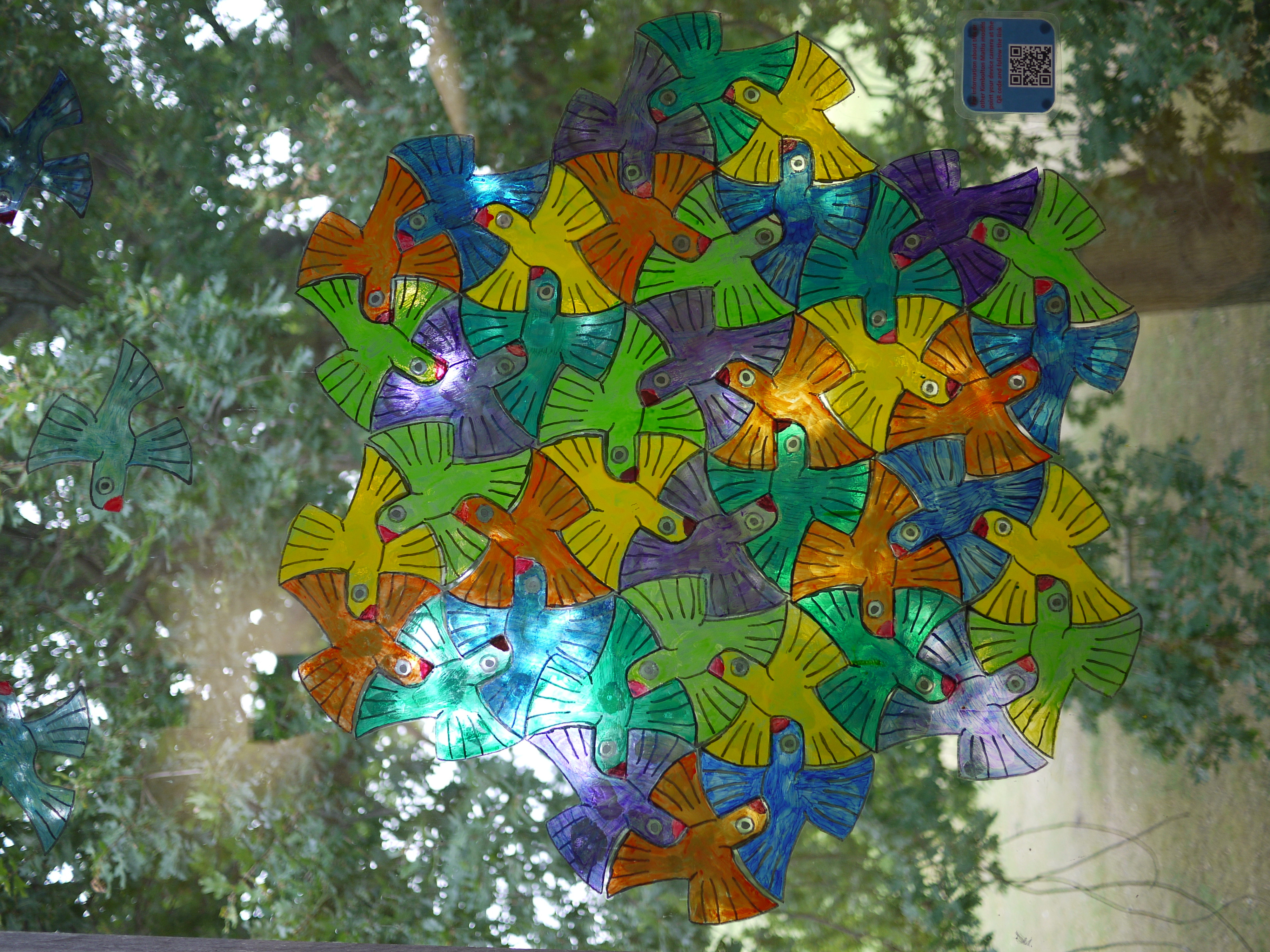
Aperiodic tessellation
Tessellation is the name for filling a plane with one or more types of tile in a pattern whereby the surface is completely covered (no gaps between the tiles).
Conventional mathematical thought long held that all tessellations were periodic, that is, like a regular repeating pattern on wallpaper, it would always be possible to slide the pattern along and up so that it would fully match the original pattern. This is known as ‘translational symmetry’. In the 1970s however, Roger Penrose and others, found combinations of shapes that can tile the plane aperiodically. Such arrangements have no translational symmetry, but can have reflective or rotational symmetry. Penrose managed to reduce the number of distinctly shaped tiles needed to produce such a pattern down to just two. He in fact produced two different two tile sets, commonly called ‘fat and thin rhombuses’ and ‘kites and darts’.
Over the 2021/22 and 2022/23 school years my 6th Form enrichment groups have been working to make a large display window from kite and dart tiles cut out of coloured acrylic. This is a work in progress at present.
As a proof of concept I made the pane shown below using four colours of acrylic glued to a clear acrylic backing.
As often the case with pure mathematics, Penrose’s tilings have had a significant impact on major scientific discovery. They were the driving inspiration that led Professor Paul Steinhardt to initially posit, and then make, quasicrystals, and subsequently discover natural quasicrystals, thought to have been made in meteorites. These are real substances, long thought impossible, which have huge potential to improve on current technology. One possibility being in the field of photonics (like electronics but using light rather than electrons), where vastly improved computing hardware may result. At a more trivial level a very early quasicrystal application was in a non-stick frying pan coating, which is much harder and more durable than previous (Teflon) coatings.
We completed a simpler tessellation project a couple of years ago based on a parrot tile design. This small project was really a bit of downtime for my Year 10 class following their summer exams.

Tessellation is the name for a picture created by ‘tiling’ one or more images onto a 2D surface in a regular pattern whereby the surface is completely covered (no gaps between the images).
Such pictures can look stunning and on first sight can appear very surprising.
M C Escher was a master exponent who created many amazing tessellated pictures, some based on animals. Ours is in a similar style.
The picture was made by copying the basic tessellation tile (a parrot) onto overhead projector slides, which the class cut out.
These were coloured with permanent marker pens and stuck onto my classroom window with PVA glue, which goes transparent when dry and exposed to ultra violet light.
Over a few weeks the pen colour was badly faded by sunlight so a second coat of colour, this time of glass paints, was applied by my tutor group.